How to Clean Your Fountain Pen!
Ok, so you've just bought a pen, it's empty now and you want to refill it but wait, how do you clean it? In this blog I will cover how to clean the most popular filling systems used in modern fountain pens so that you can take the proper care that your pens deserve. Before we get into actually how to do the cleaning, let's go over some of the benefits that cleaning your pens can do for your collection.
-
Increases the longevity of your pens- If pens are not cleaned regularly it can cause problems depending on the inks that are used that negatively effect the writing experience. The ink can dry in the feed which can hinder ink flow, it can also get stuck and dry in the piston mechanism which would render your pen useless until you send it for repair. Cleaning your pen and letting it properly dry can return your pen to close to what it was new which is the best way to store your pens long term, just make sure to turn the piston knob once in a while to avoid it locking up.
-
Makes your ink colors true- Leaving residue from a previous ink in your pen and then inking it up with a different ink can change the color of your new ink which is less than ideal, especially when you just buy a new ink and are excited about the new color. Inks can also have different chemical makeups that aren't generally good to mix up, nothing crazy will happen but you shouldn't make a habit of mixing inks until you look into if they are the same makeup.
-
Satisfying- The process of cleaning your pens can be a deeply meditative activity and is also pretty satisfying to see the water finally run clear after cleaning your pen, I usually throw on some music or a movie while I clean and before I know it I've cleaned all my pens!
Cartridge & Converter Mechanisms
The first and most common filling mechanism we will go over is the cartridge converter system which, in my mind, is the quickest and easiest clean out of all the other filling systems. For this you will need some cold water and a bulb syringe if you have it, usually you can find them labelled as some kind of medical thing but its essentially a shortened rubber turkey baster that you can draw water up with.

The easiest way to clean these would be to draw up the cold water using the converter the same way you would to fill it and continue that until the water runs clear but that is usually not the most time efficient way to do it. Instead of this method you could employee the help of the bulb syringe and to do this you are going to want to detach the converter and draw up clean, cool water with the
syringe, place it where you would connect the
converter and slowly push the water through until you notice that it runs clear, then you can clean the converter by either taking a blunt syringe and pushing water through it or agitating it in a sink or container that has cool water in it, I find this way is much faster but does require extra things whereas the other method just requires your pen and cold water.
Piston Mechanisms
The next most common mechanism in my mind is the piston filling mechanism which is featured in more of the higher price pens but can be found in things like TWSBI pens which are great starter piston pens offered at a great price. Piston mechanisms are similar to the piston converter but the main and obvious difference is that this mechanism is built into the pen which means that you usually can't take it apart for cleaning like the converter. To clean these mechanisms I recommend that you just continually fill and empty the pen with clean, cool water until it runs clear however there is an extra step that I take when it is available and that has to do with the drying.
Some Piston filling pens will have nibs that can be removed but I must stress how cautious you have to be when doing this because it can result in devastating effects if you are not careful. Very carefully take the nib out, usually in a screw in style so carefully screw it out exposing a large channel that leads to the main ink store, after cleaning this will be mostly empty but will have a few pesky spots where water pools and to get rid of this I like to take a Q-tip and absorb the water with that so that it gets completely dry. This just gives me a little extra peace of mind when I put away my clean pens and allows for a rich, true color when filling them again because the ink will be diluted less than if you kept water in.
Vacuum Mechanisms
A bit more rare than both mechanisms we've looked at thus far is the Vacuum which has massive ink capacity benefits but can be pretty annoying to clean but fear not, I'll try my best to alleviate this annoyance. Vacuum fillers can be found in pens of pretty much every price range with the TWSBI Vac700 being under $100, the Pilot Custom 823 being under $300 and the Visconti Homo sapiens being right around $800 and the cleaning of these pens can vary even though they all have the same or similar filling mechanisms.
The Vac700 and Custom 823 are probably going to be the easiest vacuums to clean due to the fact that the filling assembly can be taken apart and then the pen body can be cleaned from the wide opening at the back and the vac rod can also be cleaned separately. TWSBI includes the tool needed to do this, it looks like a tiny little metal wrench, Pilot does not include this tool but the TWSBI one is compatible with the Pilot. So for those two pens you will want to empty the initial ink and maybe fill it the normal way a couple of times with cool clean water and empty that until it gets more clear. After this take the back knob and unscrew it completely, you will see two flat parts on the threads that the end cap screws into and this is where you will attach the wrench and carefully turn until the mechanism comes out.

After that you can rinse the actual rod off with cool, clean water and use a bulb syringe on the back of the body, if you feel so inclined you can also dry the body with Q-tips to ensure a through clean. For Vac fillers that can't be disassembled like the
Visconti power fillers, the cleaning process is not as streamlined, what I do is essentially empty and fill it with cool water until I get it the closest I can to clear, after that I, very carefully, unscrew the nib unit and put a dull syringe down the hole and try to suck up any remaining moisture, then I will leave it out pointed down with no nib in it to try and dry it out even more. After you've left it for a sufficient amount of time you just screw the nib unit back in and you are good to go!
Eyedropper Mechanisms
While increasing in popularity because of brands like Opus88 and Franklin Christoph, the eyedropper fill is still on the rare side with most pens not being advertised as eyedropper fillers but a lot of pens can still be converted to this efficient way of filling. Eyedropper is the easiest system to clean in my opinion and that's because you essentially just open it up where you would fill it, dump the ink out and rinse with water, you can use a bulb syringe for the section and nib piece but other than that you are done.
Now there is an extra step if you put silicone grease on the threads to avoid leaking, usually I just re-up that every time I fill so I try my best to clean it off the threads with a moist cloth so that it doesn't seize up and that way I can just apply it again when I fill my pen so I know I won't have any leaks from old grease!
I hope this list answered all your cleaning questions, if you do have any more questions or blog topics you'd like to see, feel free to call us or send an email and we would be happy to oblige. Remember to enjoy your pens and keep writing!

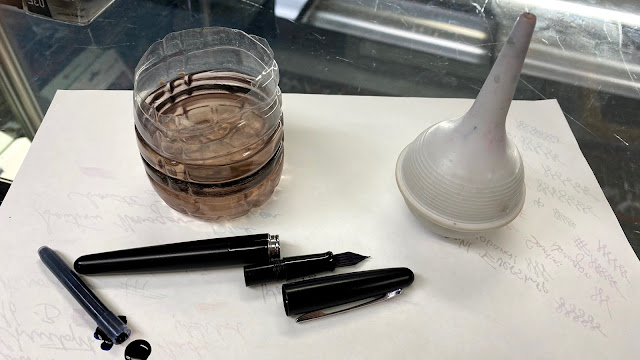

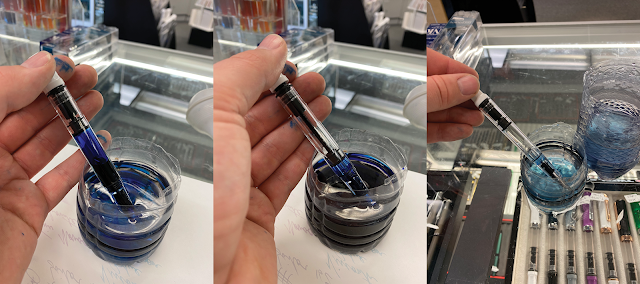
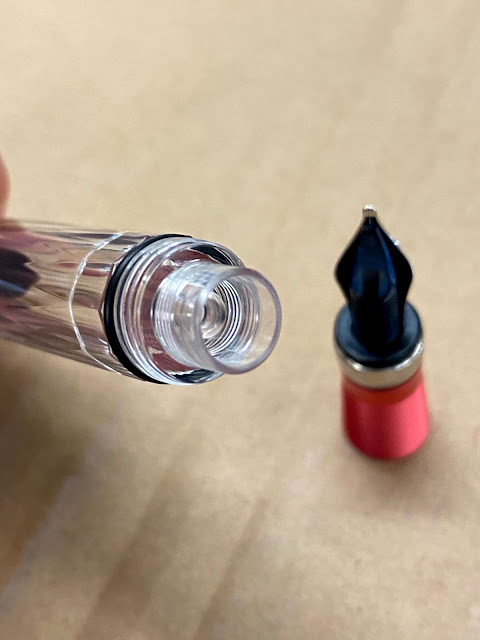
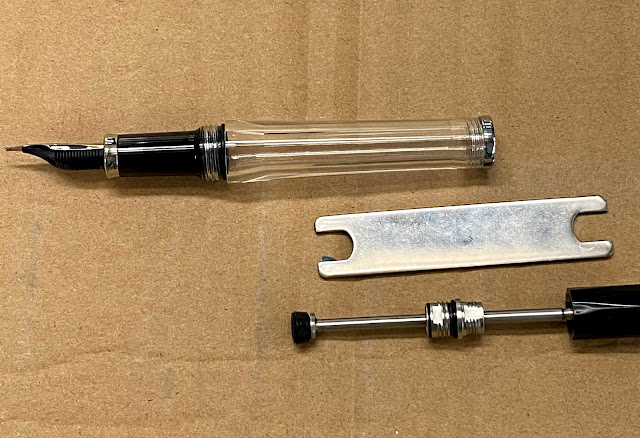

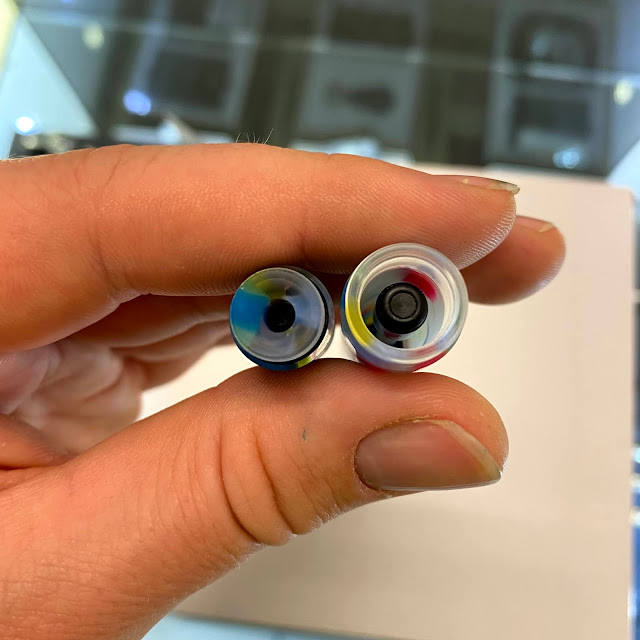










2 comments
James A Lightfoot
Thank you very much. This information is always very important for those of us who have a number of pens and/or change inks on a regular basis.
Thank you very much. This information is always very important for those of us who have a number of pens and/or change inks on a regular basis.
Jerald Bohnenblust
Well done! This contained a wealth of useful information. Thank you.
Well done! This contained a wealth of useful information. Thank you.